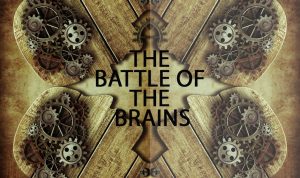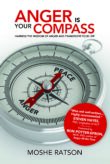THE BATTLE OF THE BRAINS

Scientists have concluded that the human brain has multiple operating systems that work based on different algorithms to serve different purposes. The Dual Process Theory (DPT) was developed and researched over many years and asserts that the human brain operates with two different decision-making systems: the “Doer” and the “Thinker”:
- The Doer—fast, intuitive, emotional, subconscious
- The Thinker—slow deliberate, controlled, rational, conscious
The Doer controls the body and operates through emotions. The Doer has built-in goals, such as survival and reproduction. And this is very important to keep in mind: The Doer uses pleasant feelings to express success or unpleasant feelings to express failure in achieving these evolutionary goals.
The Thinker uses language, symbols, concepts, and images to solve problems. The Thinker is also known as the executive function or cognitive control. The executive function includes memory, attention control, inhibitory control, problem-solving, and planning abilities. This is also where self-control resides.
The Doer is our emotional “go” system. It is located in the brain’s limbic system. It’s the basis of our emotions—our fears as well as our passions. This system is impulsive and reactive, and it often undermines our efforts at self-control.
The Thinker is our cognitive “know” system. It is located in the brain’s prefrontal cortex. This system is cognitive, contemplative, flexible, integrated, coherent, emotionally neutral, and strategic. The Thinker is, also, responsible for self-regulation and self-control.
An individual’s developmental stage, stress level, and ability to self-regulate determine the balance between these two systems. The interplay between these two systems offers an explanation of emotional control and regulation.
Let’s take a look at how each of these systems operates in our brains.
The Doer
- The Doer is intuitive and operates without logic.
- The Doer focuses only on what it can see and tries to reach a conclusion as soon as possible.
- The Doer is designed for survival, emergency situations, and reacting quickly.
- The Doer thinks quickly in order to manage routine, day-to-day tasks.
- The Doer is hypersensitive and often impulsively makes errors that lead to wrong decisions.
The Thinker
- The Thinker engages in effortful mental activity and logic.
- The Thinker uses a deliberate, conscious process to logically calculate options and manage complex tasks.
- The Thinker is slow, rational, well-informed but somewhat lazy, involving more effort to reach decisions and solve problems.
- The Thinker requires slowing down, reasoning, computing, focusing, and concentrating.
- The Thinker does not jump to quick conclusions.
These two systems serve as functional agents for different purposes. The Doer assists us with going about our daily routines in an efficient manner. The Thinker comes into play when we calculate a math problem, choose where to invest money, plan a trip, or fill out a complicated form. Both systems help us to function effectively.
Sometimes, however, these two systems conflict with one another. For instance, while we would always prefer to operate as the Thinker so we can make the best decision in any given situation, during an emergency, time becomes critical, and the Doer might take over. This might save our life and might also introduce the possibility of being mistaken. When a clash between the two systems takes place, it creates an uncomfortable tension that can result in anxiety. It throws the mind out of balance and into chaos and confusion.
In such situations, when a quick and superficial appraisal of a situation overrides a slower, deeper level of appraisal, unpleasant feelings arise, and we might become confused, worried, anxious or angry. Perhaps we begin to imagine a “new reality” that has nothing to do with actual reality. In this case, worry or anger are driven by irrationality. For example, a person might feel they have been treated unfairly by someone and begin to view that person as morally inferior, completely ignoring the fact that their own actions might be to blame.
However, at times, the functions of the Thinker and the Doer brains are at conflict with each other. Imagine the struggle you feel when you are forced to make a difficult choice or are unable to stop yourself from behaving irrationally.
Here’s an example: You’ve made a conscious choice in your Thinker brain not to eat ice cream tonight because you know sweets trigger a migraine if you eat them when you’re worn-out. However, sugar is a deep, ancient desire that exists in your body and in your unconscious, Doer brain. It gives you a rush of energy and strength while it helps you store fat. Initially, you’re able to withstand, but then you surrender and eat the ice cream, justifying it by rationalizing, I’ll just have a tiny portion of ice cream; It was a difficult day today and I worked hard, and I, therefore, deserve an incentive. Your unconscious brain has prevailed.
So what can we do about the battle of the brains? Basically, we need to recognize them for what they are and accept their value and purpose. Yet, it is important to integrate both brains while understanding the importance of the Thinker as the “new/upgraded brain” as the leader; the one that should be in charge.
Having a basic knowledge of the different roles of the brains is key in learning to recognize our self-sabotaging behaviors, their triggers, and exercising self-control and self-soothing.
When we use skills such as patience, empathy, compassion, self-soothing, listening and humor, we’re basically utilizing the Thinker to manage the alarms which have been triggered by the Doer.
A major goal of constructively dealing with the conflict of the brains is to manage the conflict so that you don’t get overly upset in the first place, becoming emotionally flooded or hooked into fight-or-flight mode. Knowing how to calm down if you get hooked, plus sensing how and when to take a timeout if things begin to get out of hand, are skills to learn and practice. The more you practice it the more integrated the Thinker and the Doer become. An integrated brain, led by the Thinker, is the way to go.
References:
Evans, J. St. B. T. 2008. “Dual-Processing Accounts of Reasoning, Judgment and Social Cognition.” Annual Review of Psychology, 59: 255–278.





